A common joke when you talk about emerging markets is that even in the most remote and dire places, you will find a bottle of Coke.
The logistic empire built by the Coca-Cola company around a single product (Coca-Cola or Coke products still account for 78% of their sales) is amazingly efficient, as it controls a network of franchises who receive the syrup concentrate, which they bottle locally.
But as so many large companies, Coca-Cola needs to innovate. After all, other product industries are being disrupted by startups as well, from cigarettes (electronic cigarettes) to game consoles (OUYA, Oculus Rift), so the good old bottle of Coke may not be as safe as it appears.
We’ve met with Stefan Jacob, one of the 16 entrepreneurs chosen by the Coca-Cola Company to run, with a buddy, the Singapore Accelerator within the Coca-Cola Accelerator Network.
The Coca-Cola Accelerator Network: Eight buddy teams to startupify the Happiness brand
The organisational principle is easy to understand: eight buddy teams of entrepreneurs in eight cities in the world (Rio de Janeiro, Buenos Aires, Bangalore, Berlin, Singapore, Istanbul, Sydney, San Francisco) have all they need to test and try ideas, turn them into startups, and hopefully make it successfully thanks the company’s huge network and scale, especially with the marketing and retail network.
The details of his story are way more interesting as they show how a big corporation, one of the most powerful brand in the world, can struggle when it comes to play and act as a startup.
Somewhere between the Entrepreneur in Residence and the Idea Lab, the new entities of Coca-Cola are blurring the lines. As we saw in other stories on corporate innovation (with MEST incubator in Ghana or General Electric Garage in Nigeria), there’s clearly no established pattern.
All eight teams don’t have a specific roadmap and work objective, except they need to think in the (very broad) limits of the Happiness brand Coca-Cola embodies. Their role is not to hunt down for startups, but to create “a network of entrepreneurs thinking from a Coke scale point of view” as Stefan summarises.
In terms of methodology, all eight teams use the Lean startup model to iterate fast and try get an early customer validation before moving on.
Big companies and innovation strategies: when risk avoidance hides lost opportunities
The way these buddy teams were hired are also significant of the struggles of big companies today. No job posting was done, and Coke selected a few dozen people they interviewed collectively and individually.
Initially, all were hired as Coke employees, which turned to be an issue rapidly. “Big companies are ruled and managed by lawyers, as they analyse every move in terms of risk avoidance. The problem is that they don’t take into account the cost of lost opportunities to match these risks”. Of course, there’s no going back on sanitary rules, ha says, but there’s still too many rules and regulations.
After a few weeks, each piece of the Coca-Cola Accelerator Network has turned into an independent entity, funded by Coke, where buddy teams operate as innovation agencies, like in the advertising industry.
Technically, each pair of founders per city owns an entity fully funded by the company, and any new business gives them a right to equity.
The whole structure gives each buddy pair more room to hire, test and try, without falling into the compliance issues a big corporation necessarily faces (and which explains why the market for startup exits within the corporate world is so strong).
The acceptance of two different worlds: Coca-Cola won’t be a startup soon
The most radical choice for the Coca-Cola Accelerator Network is its overall isolation from the rest of the company. When other corporate accelerators send their the company’s staff every week or month at the accelerator to get a feeling of how startups actually work, Coca-Cola don’t think it’s useful.
“Each team has a mentor within the top managers of the group, and the VP Innovation has a dashboard with our projects and milestones”, says Stefan. “But overall, mixing employees with entrepreneurs, or vice-versa, is seen as a distraction, so we keep it to the bare minimum of a monthly connection”.
In the beginning, the teams did try to instil a culture of rapid learning and experimentation in the group, but it’s fundamentally too different from the startup world.
To launch the Accelerator as a network, and not only as eight dots without any link, the Innovation department of Coke did gather them all in Berlin for a 3 day seminar.
All eight teams presented their local cities, trends and insights. Then, they discussed topics prepared by the VP Innovation. As a third step, they all had free time to gather and discuss.
With the Coca-Cola Accelerator Network, the company hopes to cut the time a big corporation needs to move on sensitive topics, in an age where startups innovate faster than traditional R&D departments.
Before joining the Coca-Cola Accelerator Network Lab, Stefan used to work at Newton Circus a Singapore-based innovation company that defines itself as “a technology company and consultancy that invents communities and services designed to make cities more liveable”.





